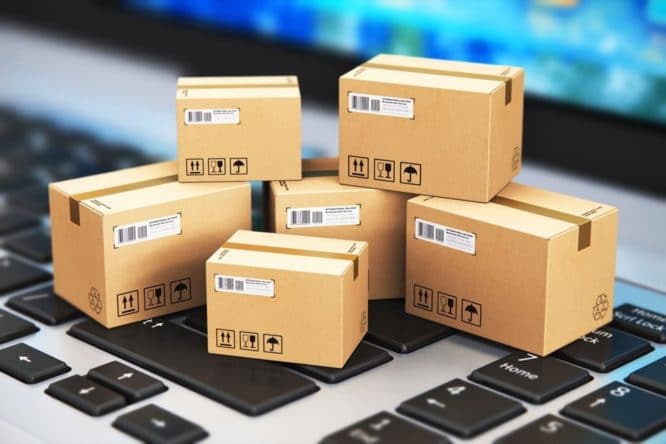The unprecedented spread of COVID-19 has changed the way businesses operate. Personal hygiene and social distancing have emerged as top priorities. As a result, online shopping has become not only a necessity but more of a lifestyle change as we adjust to the new normal.
Long-Awaited Acceleration Or Shift In Consumption Patterns For ECommerce In India?
Way before the COVID-19 pandemic disrupted the Indian economy, India was rapidly marching towards becoming a digitally empowered society. The proliferation of smartphones, increasing internet access and booming digital payments were fueling the country’s efforts towards becoming a digital economy.
In March this year, the Government of India imposed a nationwide lockdown to contain the spread of COVID-19. Since COVID-19 spreads primarily through contact with an infected person or when a person comes in contact with contaminated surfaces, the best way to guard against it is to stay at home. Owing to which shopping malls and supermarkets across the country had been shut. This led to a shift in the shopping behaviour of consumers. The pandemic has turned out to be a huge opportunity for Indian ecommerce players, with sales expected to double compared with the previous year. Despite the Covid-19 crisis and economic downturn, the ecommerce industry in India saw an upward trend post lockdown, registering a 17 % increase in order volume as of June 2020, when compared to the pre-lockdown period. Sectors such as electronics and home appliances, fashion and accessories, health and pharma, and fast-moving consumer goods (FMCG) did particularly well, with an average growth of 133% in sales.*
Today, consumers have switched from physical shops, supermarkets, and shopping malls to online portals for the purchase of products, ranging from basic commodities to branded goods. Discover how to face the multiplicity of selling channels ! This has increased online shopping usage in India and led to a rise in the number of First Time ecommerce Users. The same who had been so far inhibited shopping online. Since the norm of social distancing has been initiated for almost the entirety of 2020, the scope of online purchases and online businesses is expected to surge further.
With the unprecedented spread of COVID-19, ecommerce has emerged as the saving grace by enabling consumers to shop for what they want from the comfort of their homes and have it delivered at their doorstep. To encourage consumers to avail of the online shopping facility and assure them of their safety, ecommerce players have gone one-step ahead by offering “contactless deliveries”. In such a scenario to sustain their business, most retailers have shifted to direct online sales from their websites.
Interested in consumers trends ? Check out our article on how customers are becoming actors in the retail and logistics chain and discover our tips for logistics choices to meet ecommerce consumer needs!
New Normal Ecommerce growth in India, a game-changer for brands & logistics operators
The shift in focus on online sales in addition to continuing operations through physical stores has in turn compelled logistics service providers to upgrade their warehouse management systems. Today, logistics service providers need to upgrade their existing warehouse management systems to enable omnichannel logistics so as to synchronise inventory, warehousing & distribution functions. This synchronisation between logistics functions needs to be done across all sales channels to meet the ever changing demand of the consumers and to stay in business.. Today, owing to the global pandemic, many warehouses are busier than ever as they strive to maintain the sustained supply of essential goods in addition to non-essential products. In his interview with The Economic Times a few months ago, Alexandre Amine SOUFIANI – MD, FM Logistic India asserted, “Our customers, today, are mindful of the fact that they want to create a direct link with their end consumers. At FM Logistic India, we have accelerated the work with our customers to accelerate the B2C side of it quicker. If our speed was 20 km/hr prior to the pandemic, we are now functioning at 120 km/hr.”
The first to make this shift in operations were apparel sellers followed by furniture retailers and home accessories distributors. Food and groceries segments came last. Most retailers have had websites for a long time. However, traction on these websites have picked up manifolds during this pandemic. To cater to this new shift in demand, many brands have set up e-fulfillment centres within record time. Several players in the groceries segment are collaborating with traditional neighbourhood stores, providing and/or upgrading their IT infrastructure and training them to convert their stores into fulfillment centres. Logistics service providers, on the other hand, are working on upgrading their warehouse management capabilities.
To enable their customers in the retail and ecommerce segments to cater to the ever changing demands of their end consumers, contract logistics providers need to develop plug-and-play solutions that seamlessly work for both B2B mode (where large stocks go to shop and malls) and B2C mode (where they go to particular customers). From the same stock that was dedicated to physical stores, WMS must act as an enabler for customers to access piece orders instead of bulk, and even facilitate access to the piece level. Such flexibility requires a good deal integration. At FM Logistic India, we chose to develop an indegenious warehouse management system that is capable of managing the seasonality and skews of our customers’ supply chains.
The increase in the number of consumers turning to digital shopping platforms is no doubt an outcome of the unprecedented outbreak and spread of COVID-19. Shifting to the ‘’online’’ way of doing things – whether it is working from home or shopping for our daily requirements, this has certainly emerged as the new normal. But how long is this going to continue? Only time can tell!




